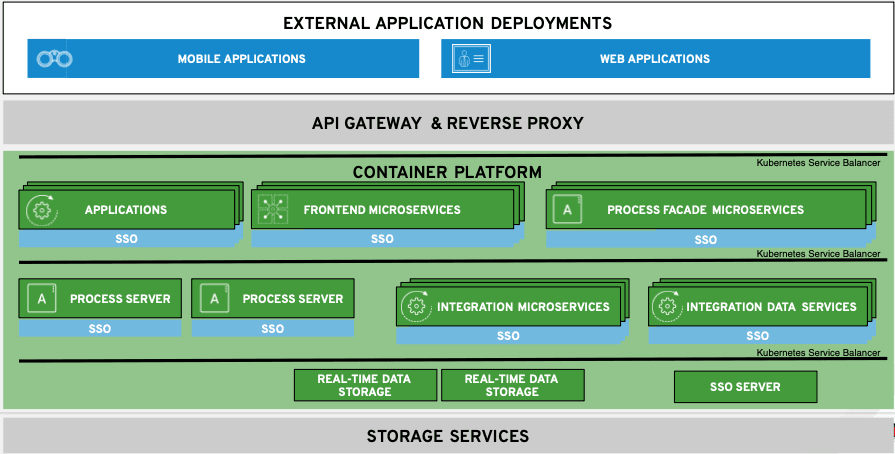Integration Key to Customer Experience – Container Platform Essentials
In my previous article from this series we looked in to details that determine how your integration becomes the key to transforming your customer experience.

It started with laying out the process of how I’ve approached the use case by researching successful customer portfolio solutions as the basis for a generic architectural blueprint. Now it’s time to cover various blueprint details.
This article has reached the core elements in the blueprint (
container platform and microservices), which are crucial to the generic architectural overview.
Architectural details
As mentioned before, the architectural details covered here are base on real customer integration solutions using open source technologies. The elements presented here are then the generic common architectural elements that I’ve identified and collected in a generic architectural blueprint. It’s my intent to provide a blueprint that provides guidance and not deep technical details.

This section covers the visual representations as presented, but it’s expected that they’ll be evolving visually over time. There are many ways to represent each element in this architectural blueprint, but I’ve chosen icons, text and colours that I hope are going to make it all easy to absorb. Feel free to post comments at the bottom of this post, or contact me directly with your feedback.
Now let’s take a look at the details in this architecture and outline the elements uncovered in my research.
Container platform
Central to all the research conducted was the use of a container platform for some if not all the microservices and applications associated with the omnichannel solution.

Without a doubt the flexibility and consistency provided by a container platform enhances delivery of solutions by the researched development teams. The operations teams became efficient with container deployments, management and monitoring standardized across multicloud infrastructures.
Within the container platform the first elements are related to the microservices intended to facilitate front end applications interactions with the rest of the integration services. Specific groups of microservices are touched on that service the externally deployed applications:
- front end microservices (providing access to internal integration microservices)
- process facade microservices (providing access to automated integration processes)
- other integration applications (providing access to aggregated microservices or other internal applications)
- single-sign-on or SSO plugins proliferate for security across the microservices and container platform
The deeper access to internal microservices are the next details we’ll examine, touching on integration and data microservices.
Core microservices
This section of the blueprint highlights a few containerized services and the core microservices.
The process facade microservices expose core process integration functionality that is part of the depicted
process servers elements. Most deployments host two for availability and leverage the container platform’s load balancing features.

The integration microservices and integration data microservices provide access to most anything in the organization. Imagine mainframes, other third-party helpdesk desktop applications, third-party cloud platform service integration, or whatever your imagination can come up with. Data integration can be container native storage, third-party products, or traditional storage components found in any architecture.
An SSO server element is shown to complete the story of what’s backing the connectivity from microservices to the authentication and authorization back-end system(s) that one encounters in an organization.
The final items shown here are special instances of storage labeled
real-time data storage, which were part of a solution researched that included integration services requiring special performance storage in containers to stream video to external applications. Interesting enough to include here, though one would expect it in the storage services.
These details are not all-knowing, but should give you the guidance you’d need to get started in your own architectural situations.
What’s next
This overview covers the container platform elements that make up our architecture blueprint for omnichannel customer experience use case.
An overview of the series on omnichannel customer experience portfolio architecture blueprint can be found here:
- An introduction
- Generic common architectural elements
- External application details
- API management details
- Container platform essentials
- Details of specific elements (storage services)
- Application integration details
- Dissecting several specific application integration architectures
Catch up on any articles you missed by following one of the links above.
Next in this series, taking a look at the details of specific elements in an architecture for omnichannel customer experience.
| Published on Java Code Geeks with permission by Eric Schabell, partner at our JCG program. See the original article here: Integration Key to Customer Experience – Container Platform Essentials
Opinions expressed by Java Code Geeks contributors are their own. |









